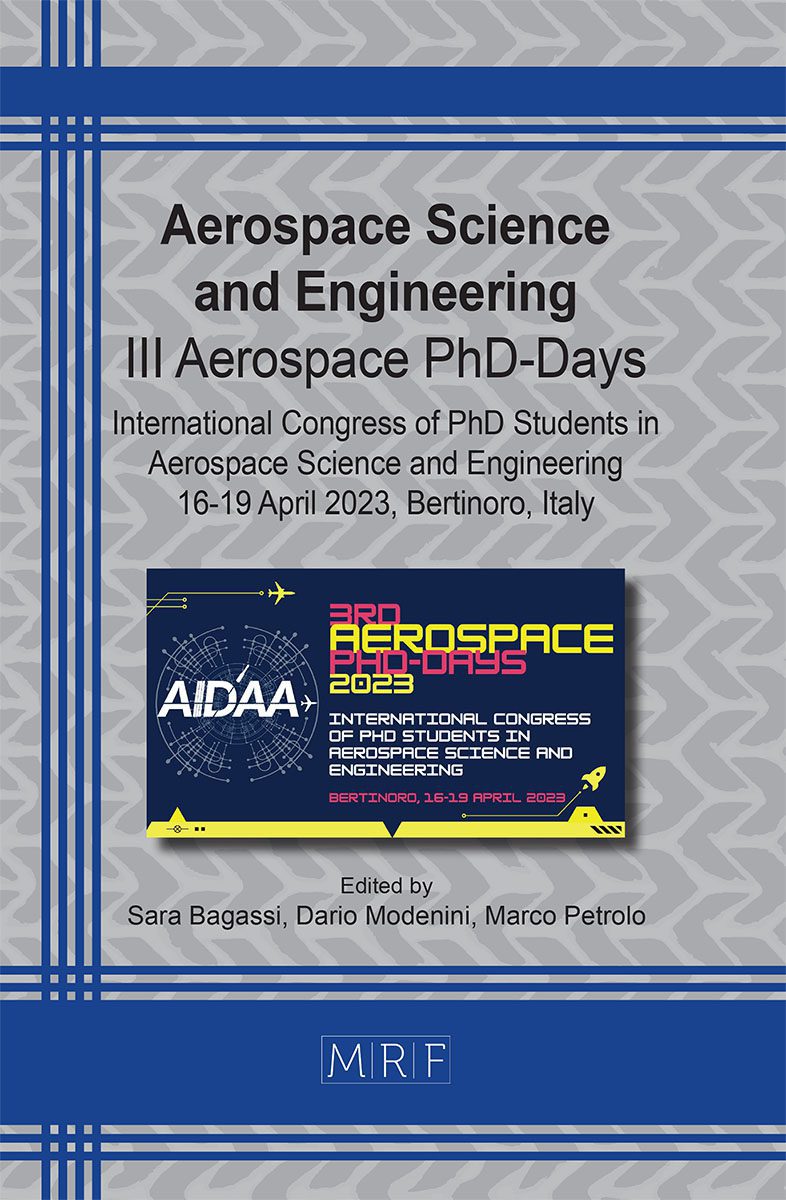DNS of momentum and heat transfer inside rough pipes
Mariangela De Maio
download PDFAbstract. We carry out direct numerical simulation (DNS) of turbulent flow in pipes with a grit-blasted surface, to investigate both on momentum and heat transfer. A wide range of Reynolds numbers are considered, while maintaining a constant molecular Prandtl number of 0.7. The large relative roughness influences both the velocity and the temperature fields, indicating that the Reynolds analogy does not hold at high Reynolds bulk number.
Keywords
Turbulent Flows, Pipe Flows, Roughness, DNS, Heat Transfer
Published online 9/1/2023, 8 pages
Copyright © 2023 by the author(s)
Published under license by Materials Research Forum LLC., Millersville PA, USA
Citation: Mariangela De Maio, DNS of momentum and heat transfer inside rough pipes, Materials Research Proceedings, Vol. 33, pp 41-48, 2023
DOI: https://doi.org/10.21741/9781644902677-7
The article was published as article 7 of the book Aerospace Science and Engineering
![]() Content from this work may be used under the terms of the Creative Commons Attribution 3.0 license. Any further distribution of this work must maintain attribution to the author(s) and the title of the work, journal citation and DOI.
Content from this work may be used under the terms of the Creative Commons Attribution 3.0 license. Any further distribution of this work must maintain attribution to the author(s) and the title of the work, journal citation and DOI.
References
[1] S. Pirozzoli, J. Romero, M. Fatica, R. Verzicco e P. Orlandi, «DNS of passive scalars in turbulent pipe flow,» J. Fluid Mech., 940, A45, 2022. https://doi.org/10.1017/jfm.2022.265
[2] C. Stimpson, J. Snyder, K. Thole e D. Mongillo, «Roughness effects on flow and heat transfer for additively manufactured channels.,» J. Turbomach., 138(5):051008, 2016. https://doi.org/10.1115/1.4032167
[3] J. Nikuradse, Strömungsgesetze in rauhen rohren, 1933.
[4] F. Hama, « Boundary layer characteristics for smooth and rough surfaces,» Trans. Soc. Nav. Arch. Marine Engrs., 62:333–358, 1954.
[5] M. Shockling, J. Allen e A. Smits, «Roughness effects in turbulent pipe flow,» J. Fluid Mech., 564:267–285, 2006. https://doi.org/10.1017/S0022112006001467
[6] M. Flack e K. Schultz, «The rough-wall turbulent boundary layer from the hydraulically smooth to the fully rough regime», J. Fluid Mech., 580:381–405, 2007. https://doi.org/10.1017/S0022112007005502
[7] A. Townsend, «The structure of turbulent shear flow», Cambridge University press, 1976.
[8] J. Jimenez, «Turbulent flows over rough walls», Annu. Rev. Fluid Mech., 36:173–196, 2004. https://doi/10.1146/annurev.fluid.36.050802.122103
[9] P. Forooghi, M. Stripf e B. Frohnapfel, «A systematic study of turbulent heat transfer over rough walls», Int. J. Heat Mass Transf., 127, 1157-1168, 2018. https://doi.org/10.1016/j.ijheatmasstransfer.2018.08.013
[10] J. W. R. Peeters e N. D. Sandham, «Turbulent heat transfer in channels with irregular roughness», Int. J. Heatm Mass Transf., 138:454-467, 2019. https://doi.org/10.1016/j.ijheatmasstransfer.2019.04.013
[11] D. Dipprey e R. Sabersky, «Heat and momentum transfer in smooth and rough tubes at various Prandtl numbers», Int. J. Heat Mass Transf., 6:329-353, 1963. https://doi.org/10.1016/0017-9310(63)90097-8
[12] J. Bons, «A Critical Assessment of Reynolds Analogy for Turbine Flows», J. Heat Transf., 127(5): 472–485, 2005. https://doi.org/10.1115/1.1861919
[13] P. Orlandi, D. Sassun e S. Leonardi, «DNS of conjugate heat transfer in presence of rough surfaces», Int. J. Heat Mass Transf., 100: 250-266., 2016. https://doi.org/10.1016/j.ijheatmasstransfer.2016.04.035
[14] J. Welch e F. Harlow, «Numerical calculation of time-dependent viscous incompressible flow of fluid with free surface», Phys. Fluids, 8(12):2182, 1956. https://doi.org/10.1063/1.1761178
[15] P. Orlandi, «Fluid flow phenomena: a numerical toolkit», in Springer Science & Business Media, 2000, 55.
[16] P. Moin e J. Kim, «Application of a fractional-step method to incompressible Navier-Stokes equations», J. Comput. Phys., 59:308–323, 1985. https://doi.org/10.1016/0021-9991(85)90148-2
[17] S. Pirozzoli, M. Bernardini e P. Orlandi, «Passive scalars in turbulent channel flow at high Reynolds number», J. Fluid Mech., 788, 614-639., 2016. https://doi.org/10.1017/jfm.2015.711
[18] G. Iaccarino e R. Verzicco, «Immersed boundary technique for turbulent flow simulations», Appl. Mech. Rev., 56(3):331–347, 2003. https://doi.org/10.1115/1.1563627
[19] S. Leonardi e P. Orlandi, «DNS of turbulent channel flows with two-and three-dimensional roughness», J. Turbul., 7:N73, 2006. https://doi.org/10.1080/14685240600827526
[20] M. Thakkar, A. Busse e N. D. Sandham, «Dataset for surface correlations of hydrodynamic drag for transitionally rough engineering surfaces», 2016. [Online]. Available: https://eprints.soton.ac.uk/392562/.
[21] A. Busse, M. Lützner e N. Sandham, «Direct numerical simulation of turbulent flow over a rough surface based on a surface scan», Comp. Fluids, 116, 129-147, 2015. https://doi.org/10.1016/j.compfluid.2015.04.008
[22] M. Thakkar, A. Busse e N. D. Sandham, «Surface correlations of hydrodynamic drag for transitionally rough», J. Turbul., 8(2):138–169, 2017. https://doi.org/10.1080/14685248.2016.1258119
[23] K. Huang, J. Wan, C. Chen, Y. Li, D. Mao e Z. M.Y., «Experimental investigation on friction factor in pipes with large roughness», Exp. Therm. Fluid Sci., 50:147–153, 2013. https://doi.org/10.1016/j.expthermflusci.2013.06.002
[24] P. Forooghi, A. Weidenlener, F. Magagnato, B. Böhm, H. Kubach, T. Koch e B. Frohnapfel, «DNS of momentum and heat transfer over rough surfaces based on realistic combustion chamber deposit geometries», Int. J. Heat Fluid, 2018. https://doi.org/10.1016/j.ijheatfluidflow.2017.12.002
































